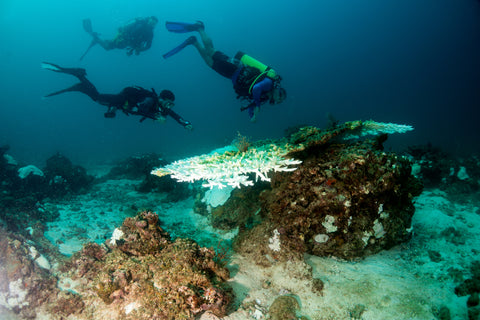Pearl Personality: Noora Jamsheer, CEO of Danat Institute in Bahrain

From the April 2021 issue of #thisispearl digital magazine
The seasoned jewelry industry expert digs into her lustrous role, which requires her to spread the message of beautiful and rare Bahraini natural pearls.
Noora Jamsheer joined Danat Institute in Bahrain as CEO in 2019, eager to share her country’s own storied treasure trove of natural pearls and history. To wit, she immersed herself in the world of pearl oysters, divers, and dealers, making new friends with Bahraini families like the Al Mahmoods, who have a long history of buying natural pearls from the country’s many divers. Below, the trained diamond expert (she is an IGI Belgium- and GIA-trained grader) sheds light on gemological laboratory Danat, the natural pearl industry in Bahrain, and “bolstering the reputation of the Kingdom as a leading center for gemstone expertise,” she explains.
Why is Danat important to Bahraini natural pearls?
In 2017, the Government of Bahrain launched the National Plan to Revive the Pearl Sector. The plan consisted of initiatives such as the enlisting of the pearl beds in Bahrain as a protected zone, the enlisting of the pearl path in Muharraq as a UNESCO World Heritage site, and the formation of a leading international pearl testing laboratory.
To the trade, Danat is important because it is close to the pearl markets and it provides testing services for all types, shapes, and sizes of pearls. It provides sorting services, certification services, and grading services for pearls. Moreover, the lab has access to a huge database of pearls from different origins, and this allows the lab to differentiate between different types of pearls, origins, and treatments.
What is the name of the oyster in which Bahraini natural pearls grow?
The majority and the most beautiful pearls in Bahrain come from an oyster species called Pinctada radiata. Of course, there are other oysters found in Bahraini waters, such as Pinctada margaritifera, Pteria, and Pinna species, which all produce pearls, but Bahrain is mainly known for pearls from the Pinctada radiata species. The most common colors of Bahraini pearls are white, light cream, cream, light yellow, and yellow, with some pink and green overtones. Some other colors can be produced, such as brown, black, and grey. The luster of Bahraini pearls is incomparable, and pearls from Bahrain have been highly sought after for centuries, a fact documented by visits of merchants like Jacques Cartier.
What makes Bahrain and its surrounding waters so special and robust for pearl growth?
Pearl formation is a result of an irritation and/or infection within a pearl oyster. In general, Bahraini waters are characterized for being shallow, with high temperatures (located in the hottest sea on the planet), and are amongst the most saline worldwide. This combination of shallow water, high temperatures, and high salinity creates the ideal condition for pearl oysters to produce pearls. High salinity and temperatures are well-known stress influencers for marine organisms, thereby reducing their natural defense capacity (lowers their immunity), making them more prone/susceptible to pathogenic parasites which cause infections within oysters. In addition, pearl oyster populations in Bahrain exist in a safe haven that allows them to reproduce and thrive due to the low presence of natural competition and predators.
The formation rate of pearls in Bahraini waters is thought to be higher relative to other seas/oceans and mollusk species yet Bahraini pearls are still very scarce.
Cultured pearls are grown and collected by farmers worldwide, but how are Bahraini natural pearls found?
Pearl diving is an active market and an activity regulated by the Department of Fisheries and monitored in collaboration with the Kingdom of Bahrain’s Coast Guard. Divers are required to be licensed and to complete an educational program that is organized by the Supreme Council for the Environment about sustainable pearling practices. Pearl divers’ licenses are valid for one year. Tourists can even partake in pearl diving trips through regulated dive centers and are limited to collecting 60 oysters per trip.
Bahraini pearls can be bought from the licensed pearl divers, from merchants within the country, or through estate sources.
[Editor’s Note: See “Bahrain Looks to Put Natural Pearls on the Map” in the January 2020 issue of Rapaport for more information.]

Noora Jamsheer, CEO of Danat Institute in Bahrain

Natural Bahraini pearls

Diving for natural Bahraini pearls


Comments on this post (0)